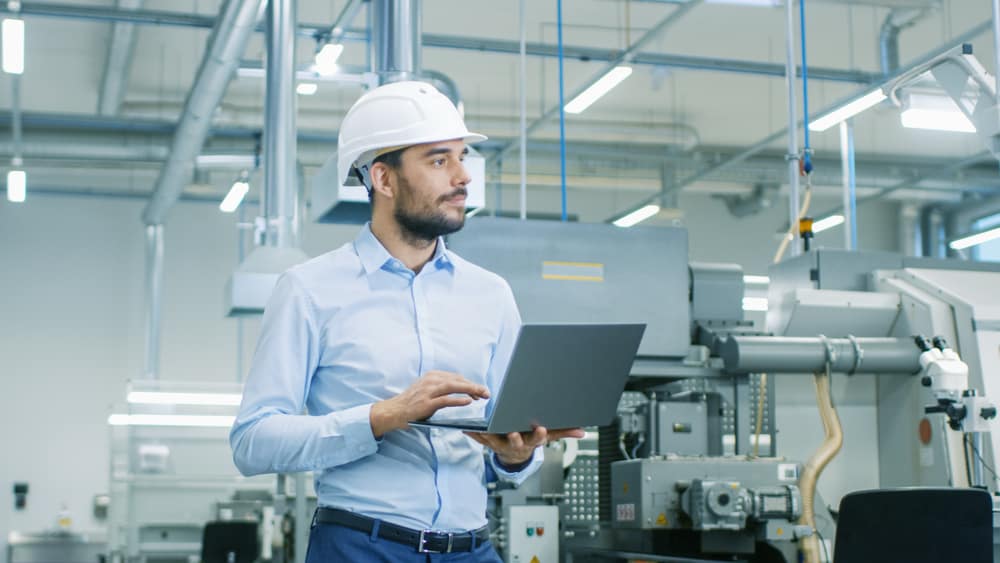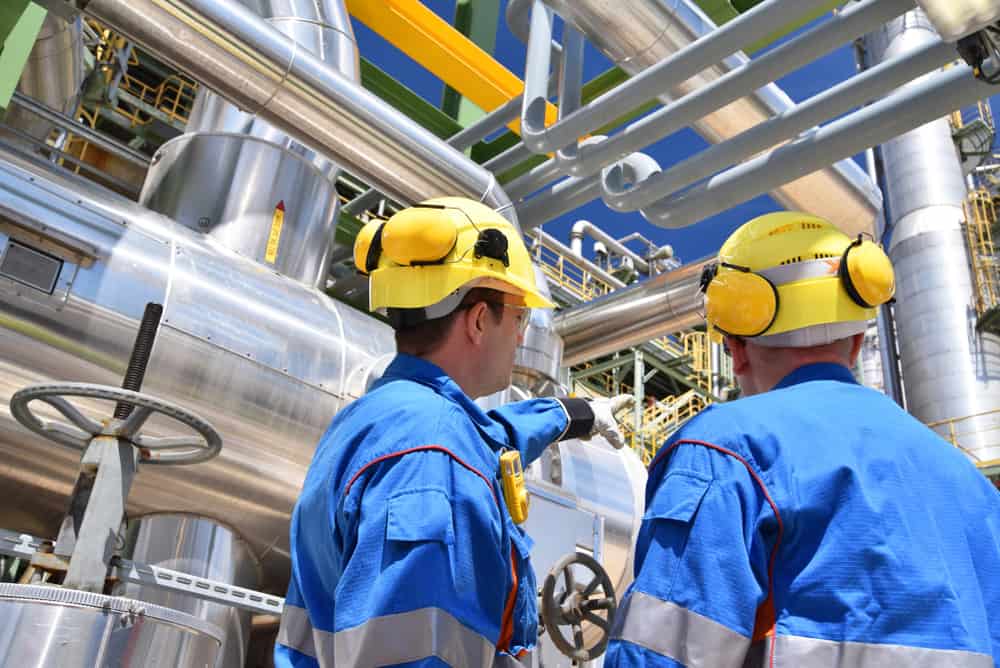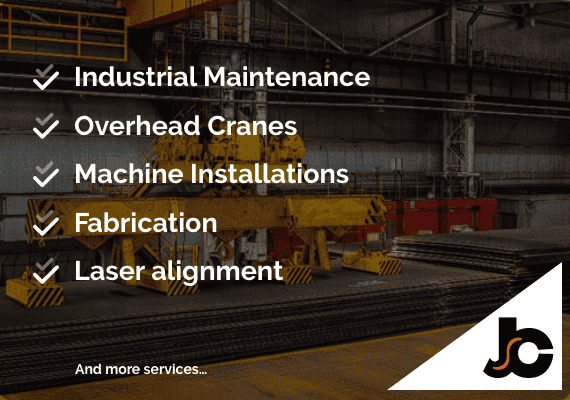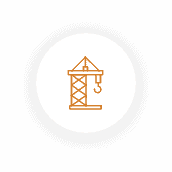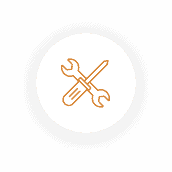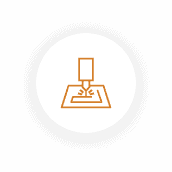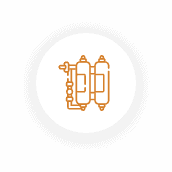Industrial maintenance refers to the process of ensuring that industrial machinery, equipment, and facilities are kept in optimal working condition to prevent breakdowns, minimise downtime, and maximise productivity. It involves a range of tasks aimed at maintaining, repairing, and servicing various components within industrial settings such as factories, manufacturing plants, refineries, and warehouses.
What Are The Key Aspects Of Industrial Maintenance
In the sections below, we’ll discuss several key aspects of industrial maintenance. From preventive maintenance to corrective actions, we’ll explore how each plays a vital role in keeping equipment running smoothly, minimising downtime, and ensuring workplace safety. The key aspects of industrial maintenance include;
Preventive Maintenance:
- Scheduled Inspections: Regularly planned examinations of equipment to detect any signs of wear, damage, or potential issues.
- Cleaning: Removing dirt, debris, and other contaminants that can impede the proper functioning of machinery.
- Lubrication: Applying lubricants to moving parts to reduce friction, prevent wear, and extend the lifespan of components.
- Replacement of Parts: Proactively replacing components such as filters, belts, bearings, and seals according to manufacturer recommendations or established maintenance schedules.
Predictive Maintenance:
- Condition Monitoring: Using various techniques such as vibration analysis, thermography, oil analysis, and ultrasonic testing to monitor the condition of equipment and detect abnormalities or early signs of failure.
- Predictive Analytics: Leveraging data analytics and machine learning algorithms to analyse equipment performance data and predict potential failures before they occur.
- Proactive Interventions: Taking preemptive actions based on predictive insights to perform maintenance activities only when necessary, thus minimising downtime and optimising resources.
Corrective Maintenance:
- Fault Diagnosis: Identifying the root causes of equipment failures through troubleshooting and diagnostic procedures.
- Prompt Repairs: Performing necessary repairs or replacements swiftly to restore equipment functionality and prevent production disruptions.
- Emergency Response: Having protocols in place to respond quickly to unexpected breakdowns or malfunctions to minimise downtime and mitigate potential safety hazards.
Routine Inspections:
- Compliance Checks: Ensuring that equipment and facilities adhere to safety standards, regulations, and industry best practices.
- Risk Assessment: Assessing potential risks associated with equipment operation and implementing measures to mitigate those risks.
- Environment Monitoring: Monitoring environmental conditions such as temperature, humidity, and air quality to maintain optimal operating conditions for machinery and processes.
Calibration:
- Precision Calibration: Calibrating measurement instruments, control devices, and sensors to ensure accurate readings and consistent performance.
- Calibration Standards: Following established calibration procedures and standards recommended by equipment manufacturers or regulatory agencies.
- Calibration Records: Maintaining detailed records of calibration activities, including dates, results, and adjustments made, to ensure traceability and compliance with quality assurance requirements.
Equipment Upgrades and Modifications:
- Performance Enhancement: Implementing upgrades or modifications to improve equipment efficiency, reliability, safety, or compliance with changing requirements.
- Technology Integration: Incorporating new technologies such as automation, IoT (Internet of Things), or predictive maintenance systems to modernise industrial processes and equipment.
- Risk Assessment: Assessing the potential impact of upgrades or modifications on existing systems and operations to minimise disruptions and ensure seamless integration.
Training and Documentation:
- Skills Development: Providing training programs for maintenance personnel to enhance their technical skills, knowledge of equipment, and proficiency in maintenance procedures.
- Standard Operating Procedures (SOPs): Documenting standardised procedures for performing maintenance tasks, inspections, and repairs to ensure consistency and compliance with best practices.
- Maintenance Records: Maintaining comprehensive records of maintenance activities, including work orders, equipment histories, maintenance logs, and compliance documentation, to track maintenance performance, identify trends, and support decision-making processes.
All The Benefits Of Industrial Maintenance
Industrial maintenance is not just a routine task; it is the backbone of efficient and reliable operations across various industrial sectors. By prioritising maintenance efforts, businesses get a number of benefits that contribute to their long-term success. One of the most significant advantages of industrial maintenance is the reduction of downtime.
Planned maintenance activities help prevent unexpected equipment failures, minimising disruptions to production schedules and ensuring consistent output. This increased uptime translates into higher productivity, improved customer satisfaction, and ultimately, greater profitability.
Industrial maintenance plays a crucial role in extending the lifespan of equipment and machinery. Through regular inspections, preventive measures, and timely repairs, maintenance professionals can identify and address issues before they escalate, preserving the integrity of assets and minimising the need for costly replacements.
By maximising the lifespan of equipment, businesses can optimise their return on investment and allocate resources more strategically. Additionally, proper maintenance practices contribute to a safer work environment by identifying and mitigating potential hazards, protecting the well-being of employees, and reducing the risk of accidents or injuries. Industrial maintenance is not just a cost-saving measure; it is an essential investment in reliability, safety, and operational excellence.
Maximising Equipment Reliability and Availability:
- Reduced Downtime: Planned maintenance activities, including preventive and predictive maintenance, help identify and address potential issues before they escalate into costly breakdowns or failures. This gets rid of unplanned downtime and production interruptions, allowing operations to run smoothly and efficiently.
- Increased Productivity: Reliable equipment that is available when needed allows production schedules to be met consistently, maximising throughput and overall productivity.
- Customer Satisfaction: Meeting production deadlines and delivering products on time enhances customer satisfaction and strengthens relationships with clients, ultimately contributing to business growth and success.
Enhancing Safety:
- Hazard Mitigation: Regular maintenance inspections help identify and address safety hazards such as worn-out components, malfunctioning safety devices, or hazardous conditions, reducing the risk of accidents and injuries in the workplace.
- Compliance with Safety Standards: Adhering to maintenance schedules and safety protocols ensures compliance with regulatory requirements and industry standards aimed at protecting the health and safety of workers.
- Employee Morale: Creating a safe work environment through proper maintenance practices fosters employee morale, engagement, and loyalty, as workers feel valued and supported by their employer.
Extending Equipment Lifespan:
- Preventive Measures: Implementing preventive maintenance measures such as lubrication, cleaning, and routine inspections helps prevent premature wear and deterioration of equipment components, thereby extending their operational lifespan.
- Cost Savings: Extending the lifespan of equipment reduces the frequency of costly replacements and repairs, leading to significant cost savings for the organisation over time.
- Asset Optimization: Maximising the lifespan of industrial assets maximises the return on investment and allows capital resources to be allocated more effectively for other strategic initiatives or investments.
Improving Product Quality:
- Consistent Performance: Well-maintained equipment operates consistently and reliably, producing products with consistent quality and specifications.
- Reduced Defects: Properly maintained machinery is less prone to malfunctions or errors that could result in product defects or deviations from quality standards.
- Competitive Advantage: Delivering high-quality products consistently enhances the organisation’s reputation, customer satisfaction, and competitiveness in the market, leading to increased market share and profitability.
Optimising Operational Efficiency:
- Energy Efficiency: Well-maintained equipment operates more efficiently, consuming less energy and reducing operating costs associated with utilities and energy consumption.
- Reduced Waste: Efficient equipment operation reduces waste generation and rework, leading to improved resource utilisation and cost savings.
- Process Improvement: Maintenance activities may identify opportunities for process optimization or efficiency improvements, leading to further enhancements in operational performance and competitiveness.
Compliance with Regulations and Standards:
- Legal Compliance: Adhering to maintenance regulations and standards ensures legal compliance and minimises the risk of fines, penalties, or legal liabilities associated with non-compliance.
- Regulatory Risk Management: Regular maintenance practices help identify and address potential compliance issues proactively, reducing the organisation’s exposure to regulatory risks and uncertainties.
- Reputation Management: Demonstrating commitment to regulatory compliance and safety standards enhances the organisation’s reputation and credibility with stakeholders, including customers, investors, and regulatory authorities.
Supporting Sustainable Practices:
- Resource Conservation: Proper maintenance practices contribute to resource conservation by minimising energy consumption, reducing waste generation, and optimising resource utilisation.
- Environmental Protection: Sustainable maintenance practices help minimise the environmental footprint of industrial operations, reducing air and water pollution, greenhouse gas emissions, and other environmental impacts.
- Corporate Social Responsibility: Embracing sustainable maintenance practices aligns with corporate social responsibility (CSR) initiatives and demonstrates the organisation’s commitment to environmental stewardship and sustainable business practices, enhancing its brand reputation and attractiveness to environmentally conscious consumers and investors.
Industrial maintenance helps the success of businesses operating in industrial sectors, offering benefits that extend beyond the workshop floor. By staying on top of maintenance efforts, organisations can minimise downtime, optimise productivity, and ensure consistent output, ultimately driving profitability and competitiveness.
Also, proactive maintenance practices contribute to the longevity of equipment, reducing the need for costly replacements and maximising return on investment. Additionally, by fostering a safe work environment through hazard identification and mitigation, maintenance efforts safeguard the well-being of employees and enhance organisational reputation.
As industries continue to evolve and technology advances, the importance of industrial maintenance remains critical, highlighting the important role it plays in sustaining efficient, reliable, and sustainable operations. Embracing a strategic approach to maintenance is not just a business imperative—it’s a pathway to enduring success in the dynamic landscape of industrial operations.
Take the proactive step towards optimising your industrial maintenance practices by partnering with Jones Complete Services (JCS). With our logical approach to maintenance, we are committed to enhancing equipment reliability, reducing costs, increasing safety, and ensuring compliance with regulations.
At JCS, we specialise in mechanical, electrical, and overhead crane maintenance, providing comprehensive services to meet your specific needs. Our team understands the importance of preventative maintenance in minimising downtime, improving efficiency, and protecting your bottom line.
Don’t wait for equipment failures to disrupt your operations. Trust JCS to deliver reliable maintenance solutions tailored to your business requirements. Contact us today to learn more about how we can support your industrial maintenance needs and keep your operations running smoothly.

